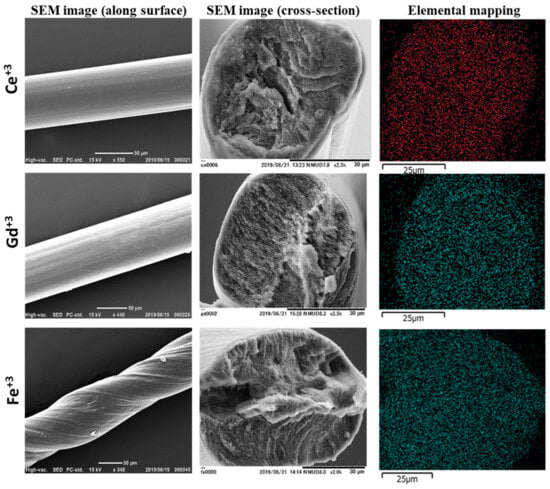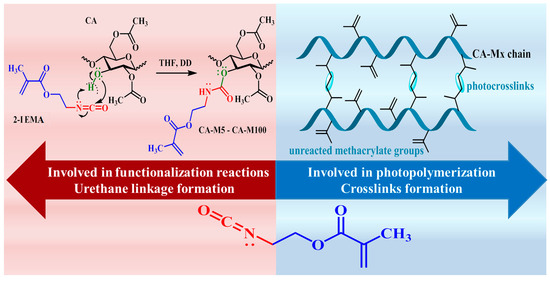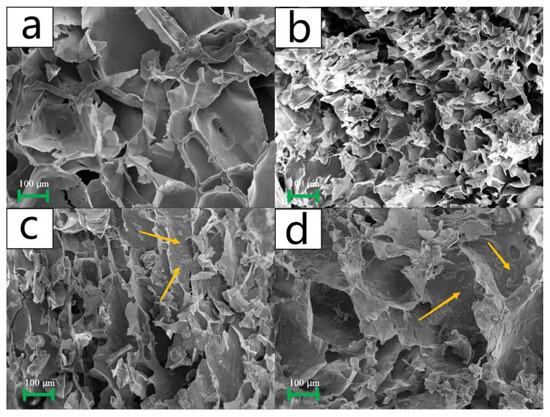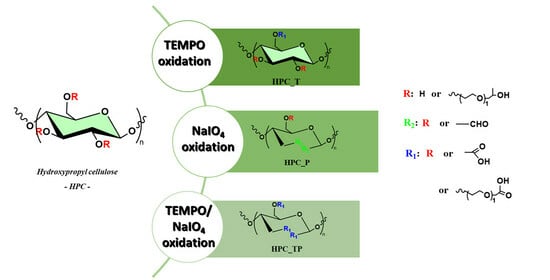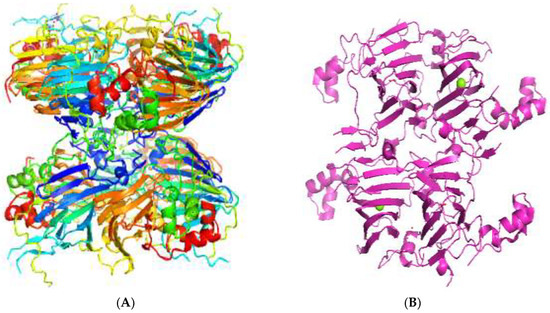Biopolymers: Synthesis and Properties
Share This Topical Collection
Editor
 Dr. Aman Ullah
Dr. Aman Ullah
 Dr. Aman Ullah
Dr. Aman Ullah
E-Mail
Website
Collection Editor
Department of Agricultural, Food and Nutritional Science, 4-10 Agriculture/Forestry Centre, University of Alberta, Edmonton, AB T6G 2P5, Canada
Interests: synthesis of monomers; biopolymers; nano-engineered biopolymers; nano-biocomposites and bioconjugates from renewable resources for various applications
Special Issues, Collections and Topics in MDPI journals
Topical Collection Information
Dear Colleagues,
Biopolymers may be classified into three main categories, including polymers directly extracted from biomass, polymers produced by microorganisms or genetically modified bacteria, and polymers synthesized using bio-based monomers. So far, a major focus has been on the extraction and utilization of extracted polymers from biomass such as cellulose, starch, and protein, but limited works are reported on the synthesis of monomers and biopolymers from renewables. There is a great opportunity to produce renewable polymers from biomass, but there are several challenges which need to be addressed, particularly challenges associated with the synthesis and properties of such polymers.
Dr. Aman Ullah
Collection Editor
Manuscript Submission Information
Manuscripts should be submitted online at www.mdpi.com by registering and logging in to this website. Once you are registered, click here to go to the submission form. Manuscripts can be submitted until the deadline. All submissions that pass pre-check are peer-reviewed. Accepted papers will be published continuously in the journal (as soon as accepted) and will be listed together on the collection website. Research articles, review articles as well as short communications are invited. For planned papers, a title and short abstract (about 250 words) can be sent to the Editorial Office for assessment.
Submitted manuscripts should not have been published previously, nor be under consideration for publication elsewhere (except conference proceedings papers). All manuscripts are thoroughly refereed through a single-blind peer-review process. A guide for authors and other relevant information for submission of manuscripts is available on the Instructions for Authors page. Polymers is an international peer-reviewed open access semimonthly journal published by MDPI.
Please visit the Instructions for Authors page before submitting a manuscript.
The Article Processing Charge (APC) for publication in this open access journal is 2700 CHF (Swiss Francs).
Submitted papers should be well formatted and use good English. Authors may use MDPI's
English editing service prior to publication or during author revisions.
Keywords
- biopolymers
- lipids
- biomass
- bioplastics
- biopolymer synthesis
- characterization
- surface functionalization
- properties
Published Papers (10 papers)
Open AccessArticle
The Potential Lubricating Mechanism of Alginate Acid and Carrageenan on the Inner Surface of Orthokeratology Lenses
by
Chen-Ying Su, Lung-Kun Yeh, You-Cheng Chang, Pei-Ting Lu, Yung-Hsiang Chang, Kuo-Hsuan Hung, Chi-Chun Lai and Hsu-Wei Fang
Viewed by 117
Abstract
When an orthokeratology (ortho-k) lens contacts the ocular surface, tear film components such as lipids and proteins rapidly adsorb onto the lens, which may increase friction and contribute to discomfort if not properly removed. Polysaccharides have been reported to reduce protein deposition and
[...] Read more.
When an orthokeratology (ortho-k) lens contacts the ocular surface, tear film components such as lipids and proteins rapidly adsorb onto the lens, which may increase friction and contribute to discomfort if not properly removed. Polysaccharides have been reported to reduce protein deposition and improve lubrication, prompting the investigation of alginate acid and lambda-carrageenan in modulating the tribological properties of ortho-k lenses. An in vitro tribological property analysis of ortho-k lenses and protein adsorption and desorption analyses were carried out to investigate the lubricating ability of alginate acid and carrageenan. Zeta potential and turbidity analyses were further conducted to examine potential interactions between polysaccharides and tear film proteins. Tear film proteins significantly increased the friction coefficient of the ortho-k lens, whereas the addition of alginate acid and carrageenan markedly reduced friction. Electrostatic interaction and polysaccharide–protein complex formation were identified as possible mechanisms underlying these effects. These results demonstrate that alginate acid and carrageenan can modify the tribological and interfacial behavior of ortho-k lenses in protein-rich environments, suggesting their potential application in reducing friction-related complications in ortho-k lens wearers.
Full article
►▼
Show Figures
Open AccessArticle
In Situ Observation of γ-to-α Structural Transformation in Bio-Based Nylon 5,6 Fibers via X-Ray Diffraction and DFT Analysis
by
Kukhyun Jo, Hyun Hwi Lee, Sung Hyun Kwon and Hyo Jung Kim
Viewed by 931
Abstract
This study investigates the structural transformation from the γ-phase into the α-phase in bio-based nylon 5,6 fibers during in situ uniaxial stretching, using X-ray diffraction (XRD) and density functional theory (DFT) calculations. Initially, nylon 5,6 films exhibited a well-defined γ-phase crystalline structure, and
[...] Read more.
This study investigates the structural transformation from the γ-phase into the α-phase in bio-based nylon 5,6 fibers during in situ uniaxial stretching, using X-ray diffraction (XRD) and density functional theory (DFT) calculations. Initially, nylon 5,6 films exhibited a well-defined γ-phase crystalline structure, and the as-spun fibers also retained a γ-phase-dominant structure with partial coexistence of α-phase components. Due to the lattice similarity between the γ- and α-phases, phase separation was challenging in the direction perpendicular to the fiber axis (ab-plane). However, the analysis of the (004) diffraction peaks along the fiber axis (c-axis) enabled the quantitative evaluation of each crystalline component. As the stretching progressed, the α(004) peak intensity gradually increased, indicating a continuous γ-to-α structural transition. Furthermore, DFT calculations revealed that the α-phase has lower energy than the γ-phase, supporting the thermodynamic favorability of the phase transition during elongation. These results provide a comprehensive understanding of the crystalline structure and transformation mechanism in environmentally friendly nylon fibers from both experimental and theoretical perspectives, and offer foundational insights for developing nylon materials with desirable properties through the precise control of crystal phase structures.
Full article
►▼
Show Figures
Open AccessArticle
Synthesis and Characterization of Bio-Composite Based on Urea–Formaldehyde Resin and Hydrochar: Inherent Thermal Stability and Decomposition Kinetics
by
Bojan Janković, Vladimir Dodevski, Marija Janković, Marija Milenković, Suzana Samaržija-Jovanović, Vojislav Jovanović and Milena Marinović-Cincović
Cited by 2 | Viewed by 1550
Abstract
This work reports a study on the structural characterization, evaluation of thermal stability, and non-isothermal decomposition kinetics of urea–formaldehyde (UF) resin modified with hydrochar (obtained by the hydrothermal carbonization of spent mushroom substrate (SMS)) (UF-HC). The structural characterization of UF-HC, performed by scanning
[...] Read more.
This work reports a study on the structural characterization, evaluation of thermal stability, and non-isothermal decomposition kinetics of urea–formaldehyde (UF) resin modified with hydrochar (obtained by the hydrothermal carbonization of spent mushroom substrate (SMS)) (UF-HC). The structural characterization of UF-HC, performed by scanning electron microscopy (SEM), Fourier transform infrared (FTIR), and X-ray diffraction analyses, showed that UF-HC consists of a large number of spheroidal particles, which are joined, thus forming clusters. It constitutes agglomerates, which are composed of crystals that have curved plate-like forms, including crystalline UF structure and graphite lattices with an oxidized face (graphene oxide, GO). The measurement of inherent thermal stability and non-isothermal decomposition kinetic analysis was carried out using simultaneous thermogravimetric–differential thermal analyses (TGA-DTA) at various heating rates. Parameters that are obtained from thermal stability assessment have indicated the significant thermal stability of UF-HC. Substantial variation in activation energy and the pre-exponential factor with the advancement of decomposition process verifies the multi-step reaction pathway. The decomposition process takes place through three independent single-step reactions and one consecutive reactions step. The consecutive stage represents a path to the industrial production of valuable heterocyclic organic compounds (furan) and N-heterocyclic compounds (pyrroles), building a green-protocol trail. It was found that a high heating rate stimulates a high production of furan from cellulose degradation via the ring opening step, while a low heating rate favors the production of urea compounds (methylolurea hemiformal (HFn)) by means of methylene ether bridges breaking.
Full article
►▼
Show Figures
Open AccessArticle
Effect of Acid Hydrolysis Conditions on the Extraction of Cellulose Nanocrystals
by
Víctor M. Serrano-Martínez, Henoc Pérez-Aguilar, María Pilar Carbonell-Blasco, Avelina García-García, Francisca Arán-Ais and Elena Orgilés-Calpena
Cited by 5 | Viewed by 2956
Abstract
The quest for sustainable and efficient methods for extracting cellulose nanocrystals (CNCs) remains critical in the development of advanced materials. This study refines the acid hydrolysis process for cellulose derived from rice straw, an abundant agricultural waste, focusing on the relationship between hydrolysis
[...] Read more.
The quest for sustainable and efficient methods for extracting cellulose nanocrystals (CNCs) remains critical in the development of advanced materials. This study refines the acid hydrolysis process for cellulose derived from rice straw, an abundant agricultural waste, focusing on the relationship between hydrolysis parameters and CNC properties. The research identifies conditions that enhance crystallinity and colloidal stability while effectively transforming amorphous cellulose into nanocrystals. Advanced characterization techniques, including XRD, SEM, TEM, and zeta potential measurements, provided insights into the structural and colloidal properties of CNCs. The findings demonstrate the influence of reaction temperature, time, and acid concentration on CNC quality, with optimized conditions yielding nanocrystals with enhanced stability and well-defined morphology. This study underscores the potential of rice straw as a renewable resource, advancing the circular economy by promoting the use of sustainable materials in high-value applications such as composite reinforcement and coatings.
Full article
►▼
Show Figures
Open AccessArticle
Metal-Assisted Injection Spinning of Ultra Strong Fibers from Megamolecular LC Polysaccharides
by
Mohammad Asif Ali, Maninder Singh, Shuo Zhang, Daisaku Kaneko, Maiko Kaneko Okajima and Tatsuo Kaneko
Cited by 3 | Viewed by 1782
Abstract
The molecular orientation of liquid crystalline (LC) hydrogels has the potential to induce a range of functionalities that can deliver great mechanical strength. Sacran is a supergiant LC polysaccharide isolated from the cyanobacterium
Aphanothece sacrum with a high amount of anionic functional groups
[...] Read more.
The molecular orientation of liquid crystalline (LC) hydrogels has the potential to induce a range of functionalities that can deliver great mechanical strength. Sacran is a supergiant LC polysaccharide isolated from the cyanobacterium
Aphanothece sacrum with a high amount of anionic functional groups such as sulfates and carboxylates. In this article, ultra-strong sacran hydrogels and their dried fibers were produced by cross-linking under injection flow with trivalent metal ions such as Al
3+, Cr
3+, Fe
3+, In
3+, and rare-earth metal ions such Er
3+ and Sr
3+. Crossed-polarizing microscopy and X-ray diffraction imaging revealed a uniaxial molecular orientation in the LC gel fiber, resulting in outstanding mechanical characteristics.
Full article
►▼
Show Figures
Open AccessArticle
Photopolymerization Pattern of New Methacrylate Cellulose Acetate Derivatives
by
Ioana-Sabina Trifan, Andreea L. Chibac-Scutaru, Violeta Melinte and Sergiu Coseri
Cited by 1 | Viewed by 2504
Abstract
Polymeric photocrosslinked networks, of particular interest in the design of materials with targeted characteristics, can be easily prepared by grafting light-sensitive moieties, such as methacrylates, on polymeric chains and, after photochemical reactions, provide materials with multiple applications via photopolymerization. In this work, photopolymerizable
[...] Read more.
Polymeric photocrosslinked networks, of particular interest in the design of materials with targeted characteristics, can be easily prepared by grafting light-sensitive moieties, such as methacrylates, on polymeric chains and, after photochemical reactions, provide materials with multiple applications via photopolymerization. In this work, photopolymerizable urethane–methacrylate sequences were attached to free hydroxyl units of cellulose acetate chains in various proportions (functionalization degree from 5 to 100%) to study the properties of the resulting macromolecules and the influence of the cellulosic material structure on the double bond conversion degree. Additionally, to manipulate the properties of the photocured systems, the methacrylate-functionalized cellulose acetate derivatives were mixed with low molecular weight dimethacrylate derivatives (containing castor oil and polypropylene glycol flexible chains), and the influence of UV-curable composition on the photopolymerization parameters being studied. The achieved data reveal that the addition of dimethacrylate comonomers augmented the polymerization rates and conversion degrees, leading to polymer networks with various microstructures.
Full article
►▼
Show Figures
Open AccessArticle
Preparation and Properties of Starch–Cellulose Composite Aerogel
by
Jihong Huang, Jingyang Gao, Liang Qi, Qunyu Gao and Ling Fan
Cited by 12 | Viewed by 3250
Abstract
In this study, we conducted research on the preparation of aerogels using cellulose and starch as the primary materials, with the addition of N,N′-methylenebisacrylamide (MBA) as a cross-linking agent. The chemical, morphological and textural characteristics of the aerogels were found to be influenced
[...] Read more.
In this study, we conducted research on the preparation of aerogels using cellulose and starch as the primary materials, with the addition of N,N′-methylenebisacrylamide (MBA) as a cross-linking agent. The chemical, morphological and textural characteristics of the aerogels were found to be influenced by the proportions of cellulose, starch, and cross-linking agent that were utilized. An increase in the proportion of cellulose led to stronger adsorption forces within the aerogel structure. The aerogel showed a fine mesh internal structure, but the pores gradually increased with the further increase in cellulose. Notably, when the mass fractions of starch and cellulose were 5 wt% and 1 wt% respectively, the aerogels exhibited the smallest pore size and largest porosity. With an increase in the crosslinking agent, the internal structure of the aerogel first became dense and then loose, and the best internal structure was displayed at the addition of 3 wt%. Through texture analysis and the swelling test, the impact of the proportion of cellulose and MBA on the aerogel structure was significant. Dye adsorption experiments indicated that MBA affected the water absorption and expansion characteristics of the aerogel by improving the pore structure. Lastly, in tests involving the loading of vitamin E, the aerogels exhibited a higher capacity for incorporating vitamin E compared to native starch.
Full article
►▼
Show Figures
Open AccessArticle
Chemistry of Hydroxypropyl Cellulose Oxidized by Two Selective Oxidants
by
Raluca Ioana Baron, Gabriela Biliuta, Ana-Maria Macsim, Maria Valentina Dinu and Sergiu Coseri
Cited by 9 | Viewed by 4371
Abstract
Along with the increased usage of cellulose in the manufacture of novel materials, those of its derivatives that have good solubility in water or organic solvents have become increasingly important. In this study, hydroxypropyl cellulose (HPC), a cellulosic derivative with distinct features, was
[...] Read more.
Along with the increased usage of cellulose in the manufacture of novel materials, those of its derivatives that have good solubility in water or organic solvents have become increasingly important. In this study, hydroxypropyl cellulose (HPC), a cellulosic derivative with distinct features, was utilized to investigate how two of the most-selective oxidation methods currently available in the literature act on the constituent OH groups of both the side chain and the anhydroglycosidic unit in HPC. The oxidation reactions were carried out first using TEMPO, sodium hypochlorite, and sodium bromide, then sodium periodate (NaIO
4), for 5 h. A combination of these two protocols was applied. The amount of aldehyde and number of carboxylic groups introduced after oxidation was determined, while the changes in the morphological features of oxidized HPC were, additionally, assessed. Furthermore, utilizing Fourier-transform infrared spectra, X-ray diffraction, and thermogravimetric studies, the chemical structure, crystallinity, and thermal stability of the oxidized HPC samples were examined and compared.
Full article
►▼
Show Figures
Open AccessArticle
Preparation of Poly(acrylic acid-co-acrylamide)-Grafted Deproteinized Natural Rubber and Its Effect on the Properties of Natural Rubber/Silica Composites
by
Supharat Inphonlek, Namthip Bureewong, Kasama Jarukumjorn, Pranee Chumsamrong, Chaiwat Ruksakulpiwat and Yupaporn Ruksakulpiwat
Cited by 22 | Viewed by 4949
Abstract
This work aims to enhance the polarity of natural rubber by grafting copolymers onto deproteinized natural rubber (DPNR) to improve its compatibility with silica. Poly(acrylic acid-
co-acrylamide)-
grafted DPNR ((PAA-
co-PAM)-DPNR) was successfully prepared by graft copolymerization with acrylic acid and
[...] Read more.
This work aims to enhance the polarity of natural rubber by grafting copolymers onto deproteinized natural rubber (DPNR) to improve its compatibility with silica. Poly(acrylic acid-
co-acrylamide)-
grafted DPNR ((PAA-
co-PAM)-DPNR) was successfully prepared by graft copolymerization with acrylic acid and acrylamide in the latex stage, as confirmed by FTIR. The optimum conditions to obtain the highest conversion, grafting efficiency, and grafting percentage were a reaction time of 360 min, a reaction temperature of 50 °C, and an initiator concentration of 1.0 phr. The monomer conversion, grafting efficiency, and grafting percentage were 91.9–94.1, 20.8–38.9, and 2.1–9.9%, respectively, depending on the monomer content. It was shown that the polarity of the natural rubber increased after grafting. The (PAA-
co-PAM)-DPNR was then mixed with silica to prepare DPNR/silica composites. The presence of the (PAA-
co-PAM)-DPNR and silica in the composites was found to improve the mechanical properties of the DPNR. The incorporation of 10 phr of silica into the (PAA-
co-PAM)-DPNR with 10 phr monomer increased its tensile strength by 1.55 times when compared to 10 phr of silica loaded into the DPNR. The silica-filled (PAA-
co-PAM)-DPNR provided s higher storage modulus, higher Tg, and a lower tan δ peak, indicating stronger modified DPNR/silica interactions and greater thermal stability when compared to silica-filled DPNR.
Full article
►▼
Show Figures
Open AccessArticle
Assessing Molecular Docking Tools to Guide the Design of Polymeric Materials Formulations: A Case Study of Canola and Soybean Protein
by
Frage Abookleesh, Farag E. S. Mosa, Khaled Barakat and Aman Ullah
Cited by 11 | Viewed by 5511
Abstract
After more than 40 years of biopolymer development, the current research is still based on conventional laboratory techniques, which require a large number of experiments. Therefore, finding new research methods are required to accelerate and power the future of biopolymeric development. In this study,
[...] Read more.
After more than 40 years of biopolymer development, the current research is still based on conventional laboratory techniques, which require a large number of experiments. Therefore, finding new research methods are required to accelerate and power the future of biopolymeric development. In this study, promising biopolymer–additive ranking was described using an integrated computer-aided molecular design platform. In this perspective, a set of 21 different additives with plant canola and soy proteins were initially examined by predicting the molecular interactions scores and mode of molecule interactions within the binding site using AutoDock Vina, Molecular Operating Environment (MOE), and Molecular Mechanics/Generalized Born Surface Area (MM-GBSA). The findings of the investigated additives highlighted differences in their binding energy, binding sites, pockets, types, and distance of bonds formed that play crucial roles in protein–additive interactions. Therefore, the molecular docking approach can be used to rank the optimal additive among a set of candidates by predicting their binding affinities. Furthermore, specific molecular-level insights behind protein–additives interactions were provided to explain the ranking results. The highlighted results can provide a set of guidelines for the design of high-performance polymeric materials at the molecular level. As a result, we suggest that the implementation of molecular modeling can serve as a fast and straightforward tool in protein-based bioplastics design, where the correct ranking of additives among sets of candidates is often emphasized. Moreover, these approaches may open new ways for the discovery of new additives and serve as a starting point for more in-depth investigations into this area.
Full article
►▼
Show Figures










